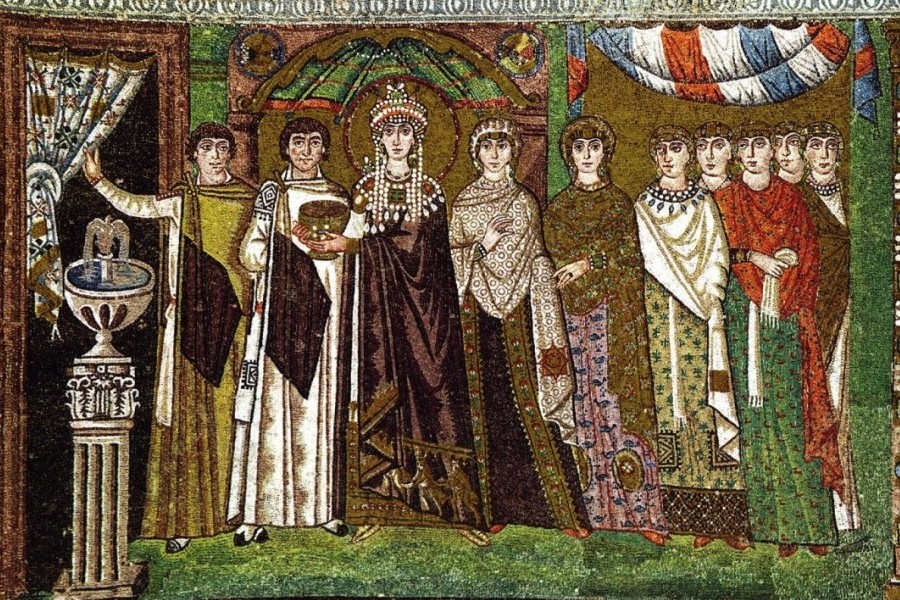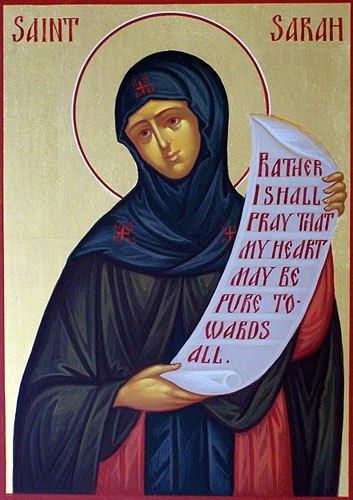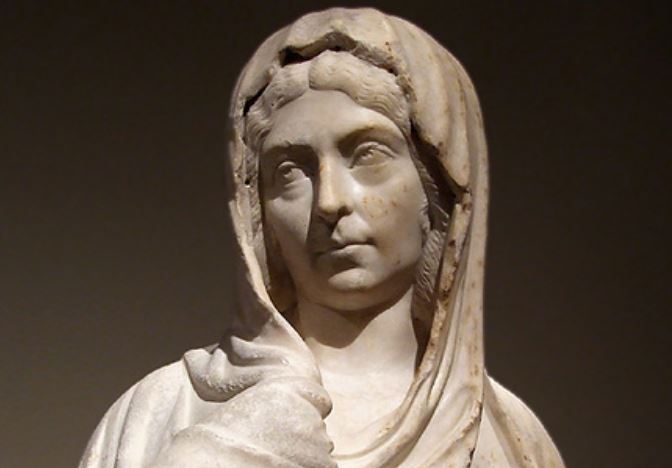
Millions of lives have been touched by women who persevered in their calling from God to serve in His Kingdom in spite of the many uphill battles they had to fight. Women have made important contributions to the Kingdom of God while all through history they have faced cultural, theological, political, and ideological obstacles in the world and in the Church.
For the last few weeks we have concentrated on women who served Christ during the Patristic era. Some of these women were born poor, others renounced great wealth to follow in the steps of Christ. Martyrs, Mothers, Theologians, Writers, Disciples, Queens, Empresses, Pilgrims, and Monastery founders are among them. The world would not be the same without the influence of these women. They showed great scholarly achievement, piety, fortitude, and courage.
We began this series on Patristic women in our first post with “Thecla – 1st Century Disciple and Missionary”. Thecla was a disciple of Christ and Paul and her life was to influence many men and women for the next few centuries.
We continued with the stories of women who gave their lives as martyrs rather than deny their Lord Jesus – Blandina (martyred 177 AD) and Perpetua (martyred 203 AD – along with her servant Felicitas).
We then recounted the stories of two famous Mothers – Helena, the mother of Emperor Constantine and Monica the mother of Augustine. Besides martyrs, and mothers, there were many female disciples of Christ, such as Marcella of Rome. Then we related the stories of two educated, brilliant female scholars during the Patristic Age – Paula and Macrina the Younger. Next, we looked at Pilgrimageas a Christian activity as modeled in the life of Egeria.
In our last post, we focused on the stories of the Desert Mothers. While early Desert Mothers went on pilgrimages to escape the persecution in Rome (30 to 311 AD), later women including Melania the Elder and Amma Sarah followed in their footsteps voluntarily for a life of prayer, celibacy, and ascetism.
We will conclude our study of women in the Patristic era with the story of an empress. Empress Pulcheria also known as Saint Aelia, served the Savior in the highest position in an empire. This godly woman led the Byzantine/Roman Empire with wisdom and compassion. It was said of her reign that it was the most stable in Roman memory. Truly God uses women even in the highest places of authority.
Pulcheria (January 19, 399 -ca. August 453)
For then, in the Great Hall of Cair Paravel… in the presence of all their friends and to the sound of trumpets, Aslan solemnly crowned them and led them to the four thrones amid deafening shouts of, “Long Live King Peter! Long Live Queen Susan! Long Live King Edmund! Long Live Queen Lucy!” “Once a king or queen in Narnia, always a king or queen. Bear it well, Sons of Adam! Bear it well, Daughters of Eve! said Aslan.[1]
Most people live pretty mundane lives going about their day to day tasks, without ever thinking that realistically they will ever be the president of the United States or a famous movie star or a sports hero. Yet, there is something in us that loves to hear the stories of the rich, famous, and powerful. Maybe we cannot identify with their position, but we can be encouraged to be the best we can be in whatever place God has for us.
Pulcheria, empress of the Byzantine Empire in the early fifth century is a woman whose story still enthralls all those who read about her. She was loved and respected as the most powerful woman in the world. This amazing woman reigned for forty-five years with wisdom and compassion. A devout Christian, Pulcheria not only ruled during some epic times in Rome but modeled the piety and chastity that was typical of religion during the Patristic era.
Pulcheria was born to Emperor Arcadius and Empress Eudoxia in 399 AD. She was only nine years old when her father died in 408 AD. Her younger brother, Theodosius II became emperor at age seven. Pulcheria took over her brother’s education even though she was only two years older. She was obviously a very strong young woman and her brother welcomed her rule by his side which continued until his death in 450 AD. Their reign is considered by historians to have been one of the most stable that the Empire had ever known.
When Pulcheria was fifteen years old she was proclaimed “Augusta” (Empress) by the Senate of Rome. By this time she had already demonstrated great leadership ability. Pulcheria was able to stay in power by maintaining control over the men who surrounded her brother. She had learned, from her mother Empress Eudoxia by all accounts, how to play the court leaders off against each other. She also avoided their attempts at sidelining her by arranging a marriage for her. She remained single and at her brother Theodosius’s side as his most trusted relative.
Theodosius needed Pulcheria. He was a kind and good natured boy, but he was weak and self-indulgent. Some historians say that he did not appear to have ever accomplished a single political act under his own initiative. Fortunately he knew that he could leave the affairs of state to his brilliant sister. Later when he died leaving no heir a civil war was prevented because Pulcheria was so able and willing to remain on the throne.
Instead of listening to the court advisors, Pulcheria and Theodosius turned to the Church for support. Monks, clergy and commoners loved these rulers because Pulcheria founded many churches and monasteries, as well as hostels for the poor and homeless. Pulcheria won the love of the faithful when she led the royal court in acts of piety, charity, fasting, and prayer. She gave away the money to beggars that would have otherwise been used on luxurious clothing or frivolous entertainment.
There were some significant events in the Church during the reign of Pulcheria. Several heresies arose and were debated. The Third Ecumenical Council was held at Ephesus in 431 AD to deal with the heresy of Nestorius. The Council of Chalcedon (451) was convened to deal the heresies of Dioscorus and Eutychius. Pulcheria defended the Orthodox position. She maintained a friendship with Cyril, patriarch of Alexandria (r. 412 -444) who was the bishop of the Christian Church in Africa and one of the great theologians of the time. Pulcheria was well educated and able to judge in theological matters.
Several times Pulcheria retired to a monastery for a contemplative life. When Theodosius married, his new wife tried to take over as the controlling influence in his life. Pulcheria wisely bowed out rather than cause conflict. Several years later she was called back by her brother when things deteriorated in the Empire without her wise rule. She ruled with Theodosius until his death in 450 AD.
After the death of Theodosius a senator named Marcion was chosen as the next emperor. The court entreated Pulcheria to remain on the throne. She could only do this by marrying Marcion which she was reluctant to do because of her vow of virginity. However, Marcion honored Pulcheria’s vow of chastity and the two were married but lived together as brother and sister. As co-rulers they continued to build the Empire. They defeated Attila the Hun when he laid siege to Rome in 452.
Not long afterward Pulcheria died (453). She had led a full and rewarding life. In her will she left all of her wealth to the poor and Marcion honored her by carrying it out. Pulcheria was the most powerful woman of her century and one of the most important people even among men. She has been canonized as a saint; her feast days are February 17 and August 7.
Pulcheria is remembered for guiding the Empire during the times of stress and peril. A grateful populace held her in high esteem for her acts of charity. Church leaders respected her for her orthodox stance on theological issues. Pulcheria’s life of wisdom, charity, and faithfulness are proof that God does indeed call and gift women for service even in leadership positions.
[1]C. S. Lewis, The Chronicles of Narnia: The Lion, the Witch, and the Wardrobe(New York, NY: Harper Collins Publishers, 1978). p. 181,182.



